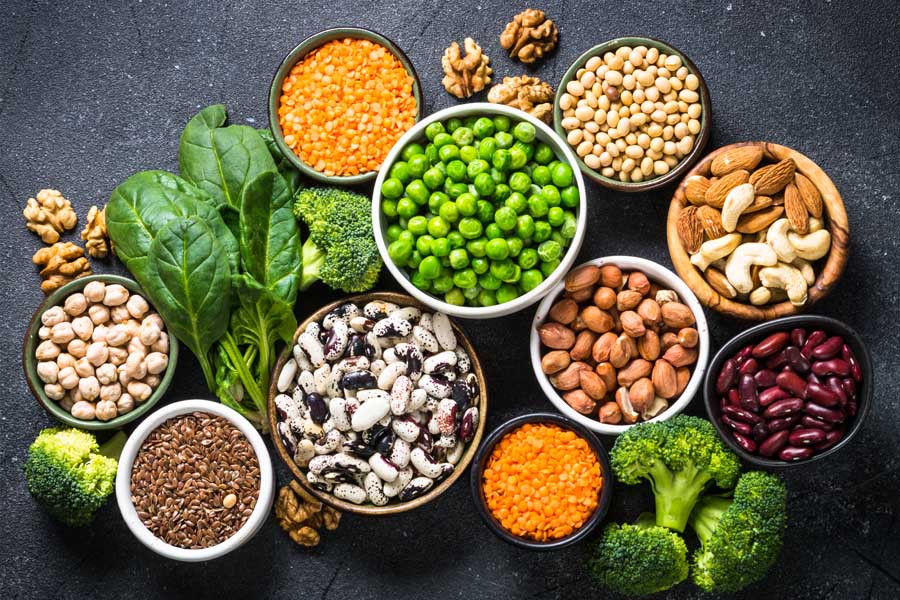It’s not as hard as you think. Here are some helpful tips.
Evidence continues to mount that a plant-based diet—rich in fruits, vegetables, whole grains, and healthy plant oils—may help reduce the risk of male health concerns, including heart disease, stroke, diabetes, and cancer. Adding fresh fruits and vegetables is a no-brainer for adopting a plant-based diet, but don’t neglect nuts, seeds, and legumes.
Nuts and seeds provide healthy mono- and polyunsaturated plant oils as well as protein. Legumes, which include beans, are filling and also contain lean protein. All of these foods are packed with vitamins and minerals. Eating more nuts, seeds, and legumes “is a good way to encourage a more plant-based diet that satisfies people in a healthy way,” says registered dietitian Kathy McManus, director of the Department of Nutrition at Harvard-affiliated Brigham and Women’s Hospital.
Botany: It will drive you nuts
It’s hard to sort out the differences between nuts, seeds, and legumes. They have particular botanical definitions, but most people tend not to observe those in everyday language. Some nuts, like hazelnuts, walnuts, and almonds, are true tree nuts, composed of a seed surrounded by dry fruit and encased in a hard shell.
Protect yourself from the damage of chronic inflammation.
Science has proven that chronic, low-grade inflammation can turn into a silent killer that contributes to cardiovascular disease, cancer, type 2 diabetes and other conditions. Get simple tips to fight inflammation and stay healthy — from Harvard Medical School experts.
LEARN MORE
View Protect yourself from the damage of chronic inflammation.
The ubiquitous peanut is actually a legume. Legumes are the edible seeds from pods you can split in half. Widely consumed legumes include the splendid spectrum of beans: black, soybean, navy, lima, chickpea (garbanzo), red, great northern, pinto, fava, and kidney. Legumes also include peas and lentils.
Portioning is key
Regardless of what you choose to call a nut, seed, or legume, for healthy meals, portioning is a key consideration.
Nuts and seeds are rich in vegetable oils, which pack nine calories per gram. That means if you eat too many nuts and seeds in one meal, you will get an overload of calories. An ounce of nuts, for example—just a handful—contains 160 to 190 calories and 3 to 7 grams of protein.
Legumes generally pack more carbohydrates than nuts and seeds, but a roughly similar amount of protein per serving. A half-cup serving of cooked beans contains 115 to 125 calories and 7 to 9 grams of protein.
But it doesn’t pay to obsess over exact portions. A loose handful of nuts can be a healthy “dose” on your morning cereal, yogurt, or oatmeal, as is a heaping tablespoon of sunflower or chia seeds. A handful of cooked beans on a salad is also a healthy meal-enhancer.

